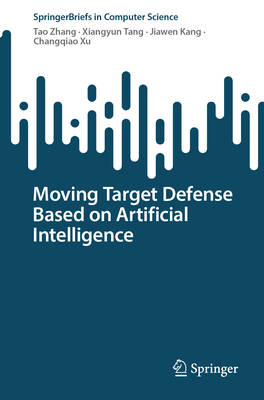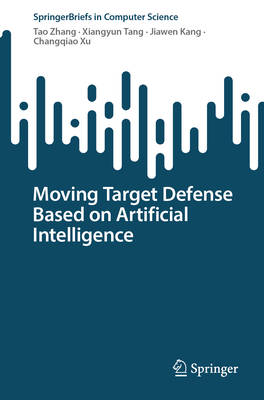
- Afhalen na 1 uur in een winkel met voorraad
- Gratis thuislevering in België vanaf € 30
- Ruim aanbod met 7 miljoen producten
- Afhalen na 1 uur in een winkel met voorraad
- Gratis thuislevering in België vanaf € 30
- Ruim aanbod met 7 miljoen producten
Zoeken
Moving Target Defense Based on Artificial Intelligence
Tao Zhang, Xiangyun Tang, Jiawen Kang, Changqiao Xu
€ 83,95
+ 167 punten
Omschrijving
Moving Target Defense (MTD) has been proposed as an innovative defense framework, which aims to introduce the dynamics, diversity and randomization into static network by the shuffling, heterogeneity and redundancy. It is born to solve the problem that traditional security solutions respond and defend against security threats after attacks occurrence, which will lead to the defender always having disadvantages in attack-defense confrontation. This book explores the challenges and solutions related to moving target defense in the cloud-edge-terminal networks. This book fills this gap by providing a comprehensive and detailed approach to designing intelligent MTD frameworks for cloud-edge-terminal networks. It is essential reading for researchers and professionals in network security and artificial intelligence who seek innovative defense solutions. The book is organized into 6 chapters, each addressing a key area of MTD and its integration with Artificial Intelligence. Chapter 1 introduces the fundamental concepts of MTD, security challenges in cloud-edge-terminal networks, and the role of artificial intelligence in enhancing MTD. Chapter 2 delves into host address mutation based on advantage actor-critic approach. Chapter 3 proposes a collaborative mutation-based MTD based on hierarchical reinforcement learning. Chapter 4 presents roadside units configuration mutation based on proximal policy optimization approach. Chapter 5 explores route mutation based on multiagent reinforcement learning. Chapter 6 provides a summary of insights and lessons learned throughout the book and outlines future research directions in MTD.
Specificaties
Betrokkenen
- Auteur(s):
- Uitgeverij:
Inhoud
- Aantal bladzijden:
- 110
- Taal:
- Engels
- Reeks:
Eigenschappen
- Productcode (EAN):
- 9789819506149
- Verschijningsdatum:
- 2/10/2025
- Uitvoering:
- Paperback
- Formaat:
- Trade paperback (VS)
- Afmetingen:
- 150 mm x 226 mm
- Gewicht:
- 204 g

Alleen bij Standaard Boekhandel
+ 167 punten op je klantenkaart van Standaard Boekhandel
Beoordelingen
We publiceren alleen reviews die voldoen aan de voorwaarden voor reviews. Bekijk onze voorwaarden voor reviews.








